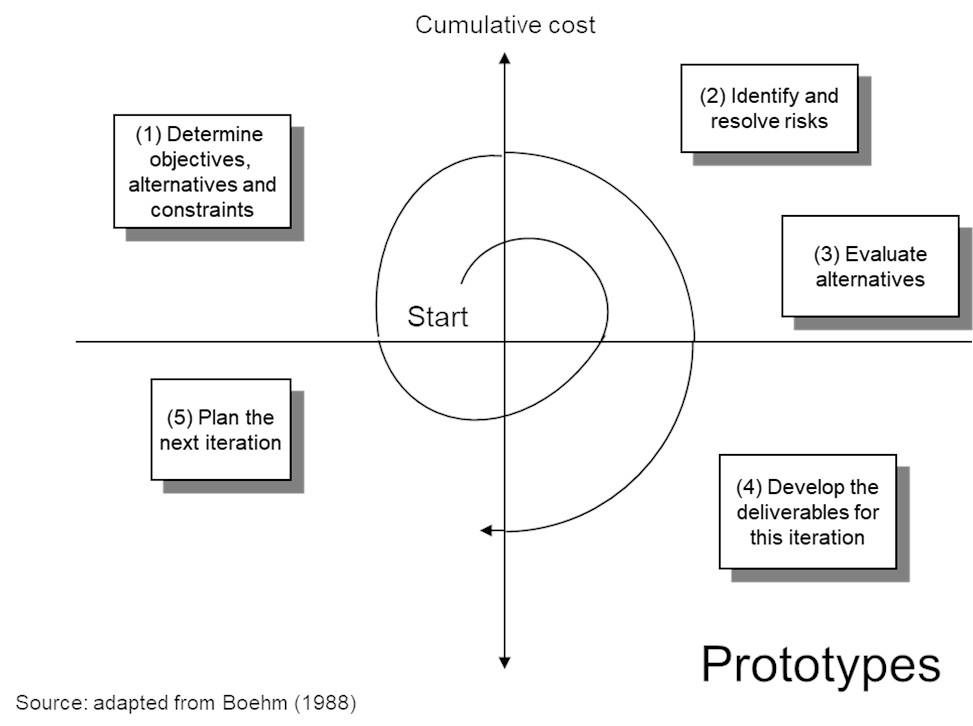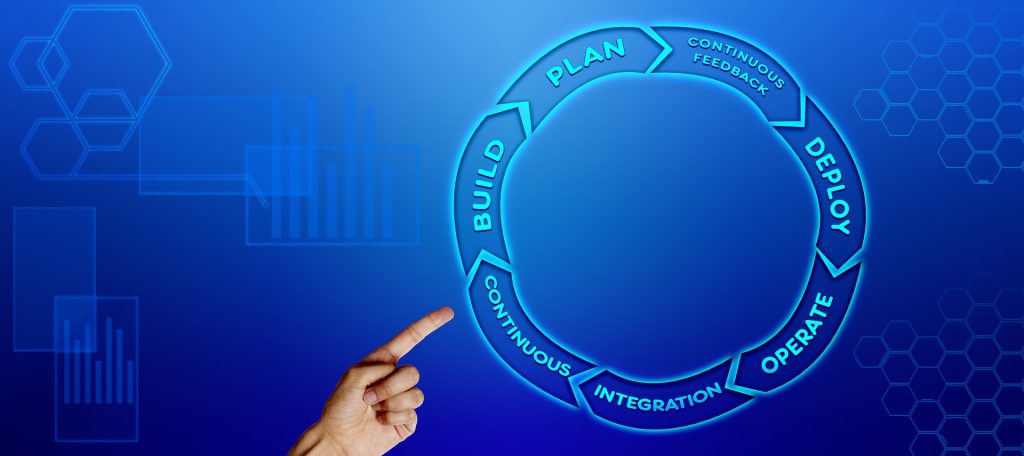I was recently asked to review an innovation project developing new sustainable products. Sustainability is usually a good topic for sparking heated debates, but on sustainability the team seemed pretty aligned. One area they did argue about was Agile. They decided to use Agile in their project, but the halfway house that they ended up with created a lot of friction. The tension revolved around the definition: ‘This isn’t Agile!’
Was it Agile? What is Agile? and Does it matter?
In this article Dr David Baxter, Associate Professor of Innovation, Southampton Business School explains why this is a difficult problem and gives his definition of Agile.
Agile in Project Management
In a recent research study, that is still being written up, we investigated the use of Agile in Project Management. This topic of huge current interest and our research project included a survey, six case studies and a systematic literature review.
Agile (the kind of Agile we are discussing now, at least) was developed for software projects. In one of our case studies the UK Ministry of Defence is creating a new IT system to manage all of its healthcare data across defence medical services.
They are applying Agile methods in this project, and so far to good effect: nine of the ten project deliverables set in the most recent 18-month increment planning were achieved, meeting the quality requirements within budget, despite the outbreak of the COVID-19 pandemic.
The staff working on the project see Agile as a key way to “provide what is actually of use to the customer”. The wider adoption of Agile is still underway, and one important blocker is the lack of organisational fit: “the culture within the MoD would be, for most occasions, most of the time, hostile to agile”.
Governance is a particular challenge, since the evaluation methods and standards usually applied by senior leaders, legal, commercial and scrutiny don’t quite fit with an Agile approach. The MoD are continuing in their journey towards Agile, and this very large project is evidence that it is now being applied well despite some pretty major obstacles. Even so, whilst it has been highly effective in this project they are not in a position to implement it more widely just yet: “I think we don’t have enough critical mass of people who understand agile to make it useful and to roll out, except in some narrow circumstances”.
This lack of knowledge about Agile was mentioned by several people:
“Apart from a handful of people, it’s very poorly understood or poorly known”
“…only a few people would understand the subtleties”
Given the apparent simplicity of Agile, this lack of knowledge is not an obvious barrier. Agile is not defined very much in the academic literature, or in practice.
In our research steering group we argued about the terms ‘Agile Project Management’ and ‘Agile Methods’. The main source of tension that I have observed in the seemingly simple question of ‘what is Agile’ comes from the view that ‘Agile is a method’. In both academic and practitioner circles it is very very common to discuss ‘agile methods ’(1). The problem with this is that you could apply an Agile method (pair programming, XP, Scrum, continuous integration) but not actually be Agile.
Agile is not a method – its a set of values
Six sigma is a method. Lean manufacturing is a method. Lean startup is a method. The Ten Commandments is not a method, but a set of principles. Agile is also a set of principles, or to use their own term, values. The Manifesto for Agile Software Development (2) sets out four values :
“We are uncovering better ways of developing software by doing it and helping others do it. Through this work we have come to value:
- Individuals and interactions over processes and tools
- Working software over comprehensive documentation
- Customer collaboration over contract negotiation
- Responding to change over following a plan
That is, while there is value in the items on the right, we value the items on the left more” (Beck et al. 2001). In addition to the four values, the Agile manifesto also outlines twelve principles, and they include simple statements like ‘satisfy the customer’, ‘welcome changing requirements’ and ‘face-to-face conversation’.
Agile creates major organisational changes
When applied as a set of values, Agile causes major changes in organisations. Even beyond its original intent as a software delivery method, to apply the principles of ‘satisfy the customer’ and ‘welcome changing requirements’ actually requires deep changes. This includes project funding mechanisms and decision criteria, contracts, partnership relationships, project governance and progress tracking, and customer interaction.
When Agile principles are followed, organisations change in fundamental ways. To further complicate matters, part of the tension around what Agile is stems from the move away from software, and the need to diverge from the Agile manifesto. For Volvo cars the Agile principle ‘deliver working software frequently’ isn’t enough to build the next generation XC90. To claim that ‘working software is the primary measure of progress’ would absolutely not work for John Deere, even in their autonomous tractor project.
Today, Agile is being used in a range of areas including project management (3) , new product development (4) , and organisational transformation. A 2019 McKinsey report(5) described how two Telco operators had taken different paths to agility, which they described in transformational terms: “Agility is a shift in the model of what an organization is, and how it operates”.
Agile organisations are flexible organic systems that focus on action.
Our MoD case study showed how deeply the day job can change as a result of Agile:
“for the very first time in my career was I able to see right from top down where all of the priorities were being set at the highest level… And it was very clear then precisely what you should be working on and what fitted within those higher priorities”

Taking Agile forward
Agile causes and requires deep changes to organisational processes and structures. Beyond that, Agile also changes what a project is and moves the boundary between projects, as temporary organisations with specific goals, and operations.
DevOps (6) is the combination of IT operations with software development, and in large companies like Etsy, Facebook and AWS, DevOps is how they work.
Taking Agile forward into the future, aerospace companies might build single products with Digital Twins in a combined R&D and service operation, continuously iterating product design and manufacturing an evolving series of unique aircraft engines. It is already possible to buy 1 million Ford Transit configurations, but at the moment Ford do not design each one independently as part of a continuously evolving design and manufacturing operation.
Maybe that’s the next step for Agile, but not until we work through the Fog of Agile and agree on what it is.
This is my definition: Agile is a set of principles that guide organisations towards delivering customer value in a flexible way. Agile is a mindset that values change, collaboration and interaction.
Dr David Baxter PhD, M(Res), BSc
Associate Professor of Innovation, University of Southampton and Certified ScrumMaster®
References
(1) Examples of Agile as a method – Qumer and Henderson-Sellers 2008; Karlstrom and Runeson 2005; Edin Grimheden 2013; Hobbs and Petit 2017; Lechler and Yang 2017).
(2) https://agilemanifesto.org/
(3) Agile in project management https://www.apm.org.uk/resources/find-a-resource/agile-project-management/
(4) Agile in new product development Cooper, Robert G. 2019. “The Drivers of Success in New-Product Development.” Industrial Marketing Management 76 (January): 36–47. doi:10.1016/j.indmarman.2018.07.005.
(5) Role in organisational transformation https://www.mckinsey.com/industries/technology-media-and-telecommunications/our-insights/a-tale-of-two-agile-paths-how-a-pair-of-operators-set-up-their-organizational-transformations
(6) https://en.wikipedia.org/wiki/DevOps











